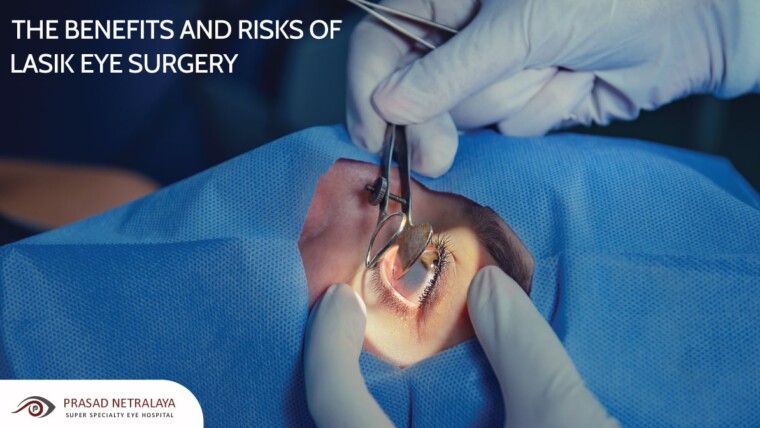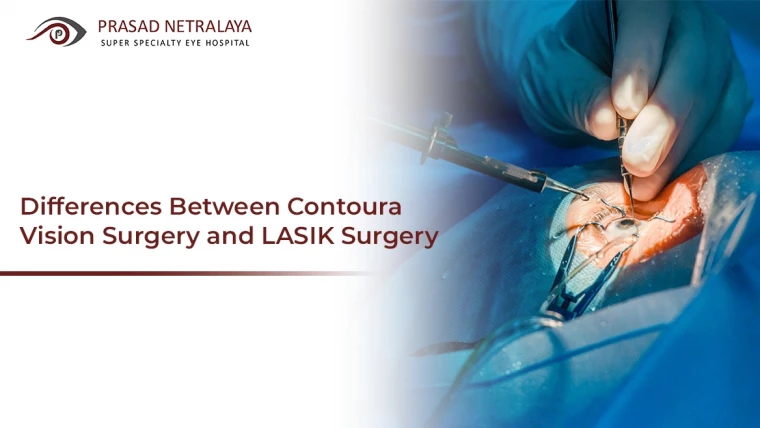The way your eyes bend (refract) light affects the way you see the world. If you’re someone who wears spectacles or contact lenses because far off or closeby objects appear blurry, your eyes have experienced a refractive error. When your eye can’t focus well and a sharp image is not received from its retina, it leads to a refractive error causing blurry vision.
Table of Contents
What Is a Refractive Error?
A refractive error of the eye means that light entering the eye does not bend correctly, due to the eye’s shape. This causes the eye to not focus images properly on the retina, and what you see appears blurry.
In a normally refracted eye, the light rays entering are focused on the retina by the cornea and the lens of the eye. This creates and transmits a sharp image to the brain. The ciliary muscle in the eye’s middle layer (vascular layer) controls accommodation for viewing objects at varying distances and adjusts the lens shape to properly focus images. But when an eye has a refractive error, it fails to focus images sharply on the retina. This could lead you to see the world as a little blurry.
Symptoms of Refractive Errors
The most common symptoms of a refractive error include:
- Blurred vision for distant objects, near objects, or both.
- Headaches, due to excessive ciliary muscle tone
- Visual fatigue
- Frowning and squinting when seeing something
- Excessive blinking
Types of Refractive Errors
Below are the most common types of refractive errors, or ‘errors of refraction’:
- Myopia: Also called nearsightedness or shortsightedness, myopia is a common problem with the eyes. It is when you can see nearby objects clearly, but far away objects appear blurry to you.
- Hyperopia: Also called farsightedness, hyperopia affects both children and adults. It is when distant and near objects appear blurry to you. The degree of your farsightedness affects your focusing ability — so your eyes may focus on faraway objects better than those nearby.
- Astigmatism: When your eye isn’t completely round, the light entering your eye does not bend properly, resulting in blurred or wavy vision. This condition is called astigmatism and can occur along with nearsightedness or farsightedness.
- Presbyopia: If someone finds it hard to read books, labels, newspapers, or things on their phone, they could have a condition called presbyopia. It is an age-related eye condition that makes you gradually lose the ability to see things clearly from up close because the lens of the eye becomes more rigid.
How Can a Refractive Error Be Corrected?
An ophthalmologist or eye care professional can diagnose a refractive error with an eye examination. The testing usually involves making the person read a vision chart while testing a range of lenses to maximize vision. In some rare cases, special imaging or other testing methods may be used.
A refractive error correction can be done using corrective lenses, in the form of eyeglasses or contact lenses. If spectacles or contact lenses annoy you and you are over the age of 21, you can also opt for refractive surgery — such as LASIK (Laser-Assisted in Situ Keratomileusis).
LASIK is the most commonly performed laser eye surgery to treat several eye conditions including myopia, hyperopia, and astigmatism. Prasad Netralaya has an experienced team that is well equipped with the latest technology to safely perform LASIK surgery. For the correction of Presbyopia, a procedure known as Presbyond is done. If you are experiencing symptoms of any of the above refractive errors, get your eyes checked at Prasad Netralaya — Mangalore and Udupi‘s leading eye hospital. Call us at +91 9513596565 or book an appointment if you wish to visit in person.



